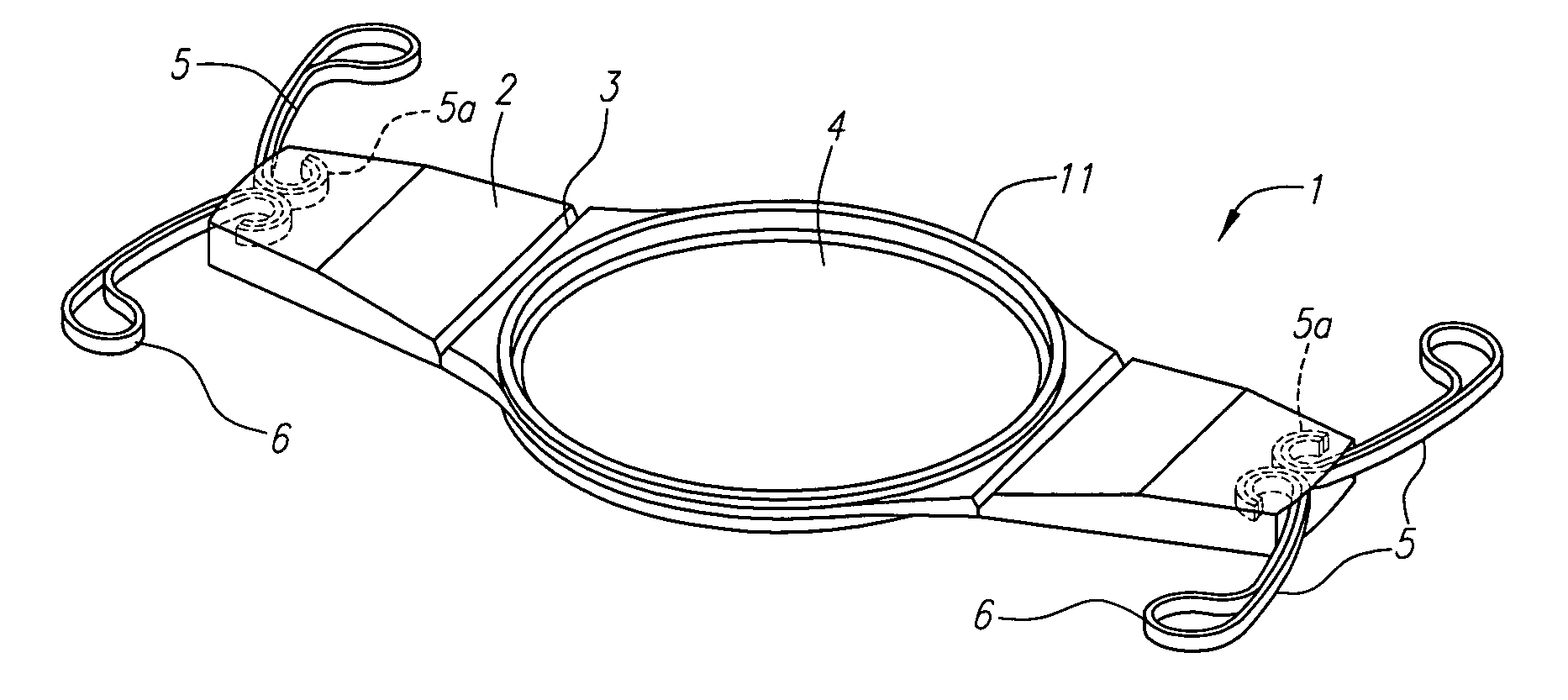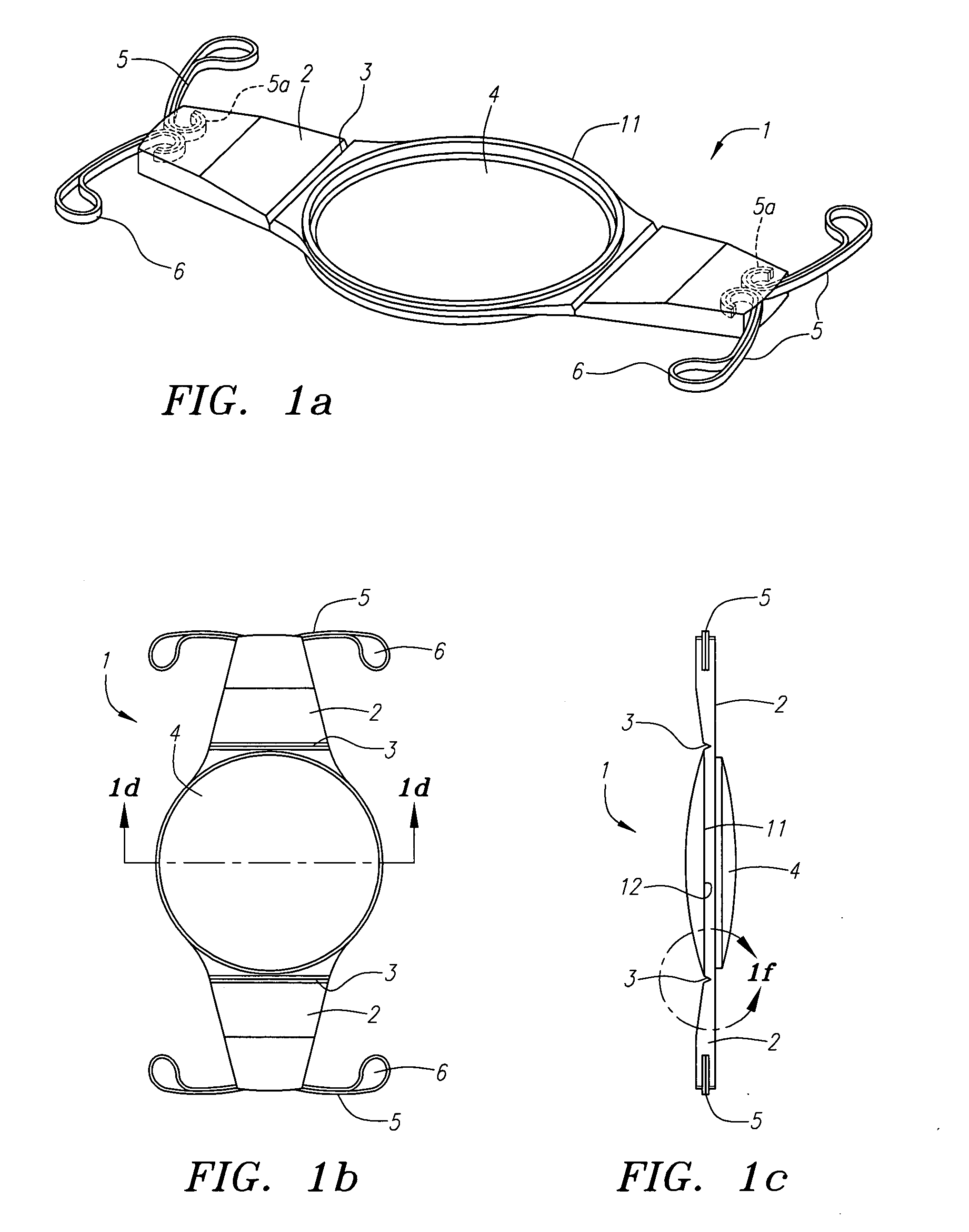Accommodating hybrid intraocular lens
a hybrid and intraocular lens technology, applied in intraocular lenses, eye implants, medical science, etc., can solve the problems of acrylic material fracturing if it is repeatedly flexed, limited materials from which the lens is made,
- Summary
- Abstract
- Description
- Claims
- Application Information
AI Technical Summary
Benefits of technology
Problems solved by technology
Method used
Image
Examples
Embodiment Construction
[0028] Turning now to FIG. 1, a preferred embodiment is illustrated in greater detail comprising an intraocular lens 1 with which the hybrid nature of the lens 1 is formed of two components, namely, a flexible optic 4 preferably made of acrylic or hydrogel which is incapable of multiple flexations, and flexible extending portions which may be plate haptics 2 which are capable of multiple flexations without damage, formed, for example, of silicone. The optic 4 and plate haptics 2 preferably are uniplanar. One or more plate haptics 2 extend distally from opposite sides of the optic 4. In this embodiment, the haptics are plate haptics having arcuate outer edges including loops 5. The loops 5 when unrestrained are somewhat less curved in configuration as shown in FIGS. 1a-1b (but compare an example of an inserted lens 1 as seen in FIG. 15). The lens 1, including the optic 4, haptics 2, and loops 5 is preferably formed of a semi-rigid material such as silicone, acrylic, or hydrogel, and ...
PUM
 Login to View More
Login to View More Abstract
Description
Claims
Application Information
 Login to View More
Login to View More - R&D
- Intellectual Property
- Life Sciences
- Materials
- Tech Scout
- Unparalleled Data Quality
- Higher Quality Content
- 60% Fewer Hallucinations
Browse by: Latest US Patents, China's latest patents, Technical Efficacy Thesaurus, Application Domain, Technology Topic, Popular Technical Reports.
© 2025 PatSnap. All rights reserved.Legal|Privacy policy|Modern Slavery Act Transparency Statement|Sitemap|About US| Contact US: help@patsnap.com



